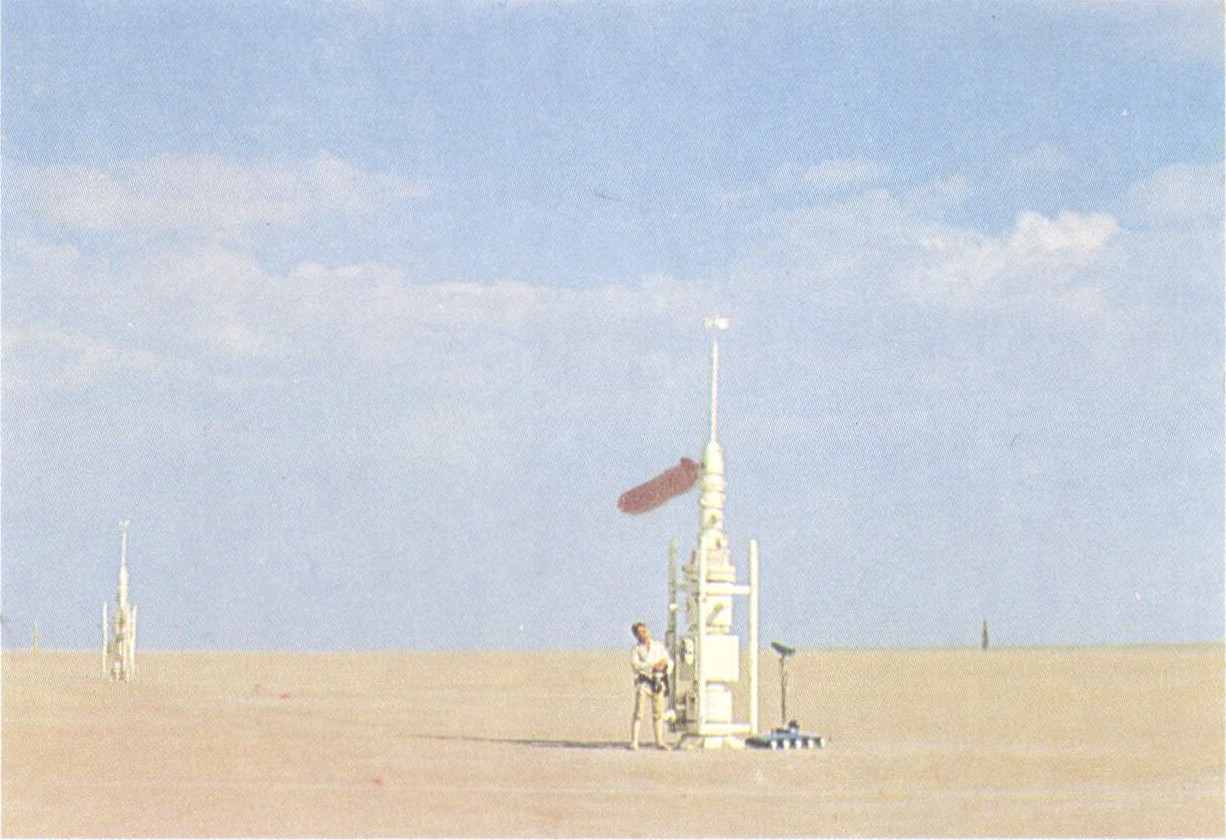Below, on the death-white wasteland which is the planet Tatooine :
Besides its appearance in the Star Wars Storybook, the deleted scene where Luke Skywalker looks up at the space battle is kept in Marvel's Star Wars comic adaptation, albeit in a shortened form, just three frames long.
In this version, there is no mention of moisture vaporators and Treadwell is absent. The brief scenes are just enough to establish the character of Luke Skywalker, the desert planet Tatooine, a passing mention of some in-universe technology (macrobinoculars and the landspeeder), and the town of Anchorhead, which we are told will be the location of Luke's next scene.
In the introduction to Star Wars: the Original Marvel Years Omnibus No. 1—the 2015 reprint of the original 1977 comic-book adaptation—script editor Roy Thomas explains the discrepancies between the comic-book version and the theatrical release of the film:
… my part in the comics consisted mostly of riding herd on [Howard] Chaykin [the illustrator] (not hard to do, since he did a fine adaptation) and adapting the dialogue and captions from screenplay to comic. Of course, we couldn't know that George [Lucas] was going to make a number of last-minute changes in early scenes of the movie, which would lead to our receiving irate letters from readers who couldn't get their heads around the fact that our comic book couldn't 100% reflect what had happened up there on the silver screen.
In this first couple of pages there are some subtle differences of vocabulary and nomenclature compared to the screen version. Where the Star Wars opening crawl talks about "Rebel spies", the comic has a "brave alliance of UNDERGROUND FREEDOM FIGHTERS". The GALACTIC EMPIRE is not "evil" but "awesome". The Empire is constructing a sinister new BATTLE STATION, but the name DEATH STAR is not mentioned. Princess Leia's starship is captured not by a "tractor beam" but by "grappling rays". Threepio's first lines include the characteristic "This is all your fault!" which he follows by calling Artoo a "half-sized Thermo-Capsulary Dehousing Assister". I'm not sure what that is, but it is just as well that that line was cut from the film…
#starwars #scifi #film #history #1977 #thegreatestspacefantasyfilmofall #marvel #starwarsweekly


